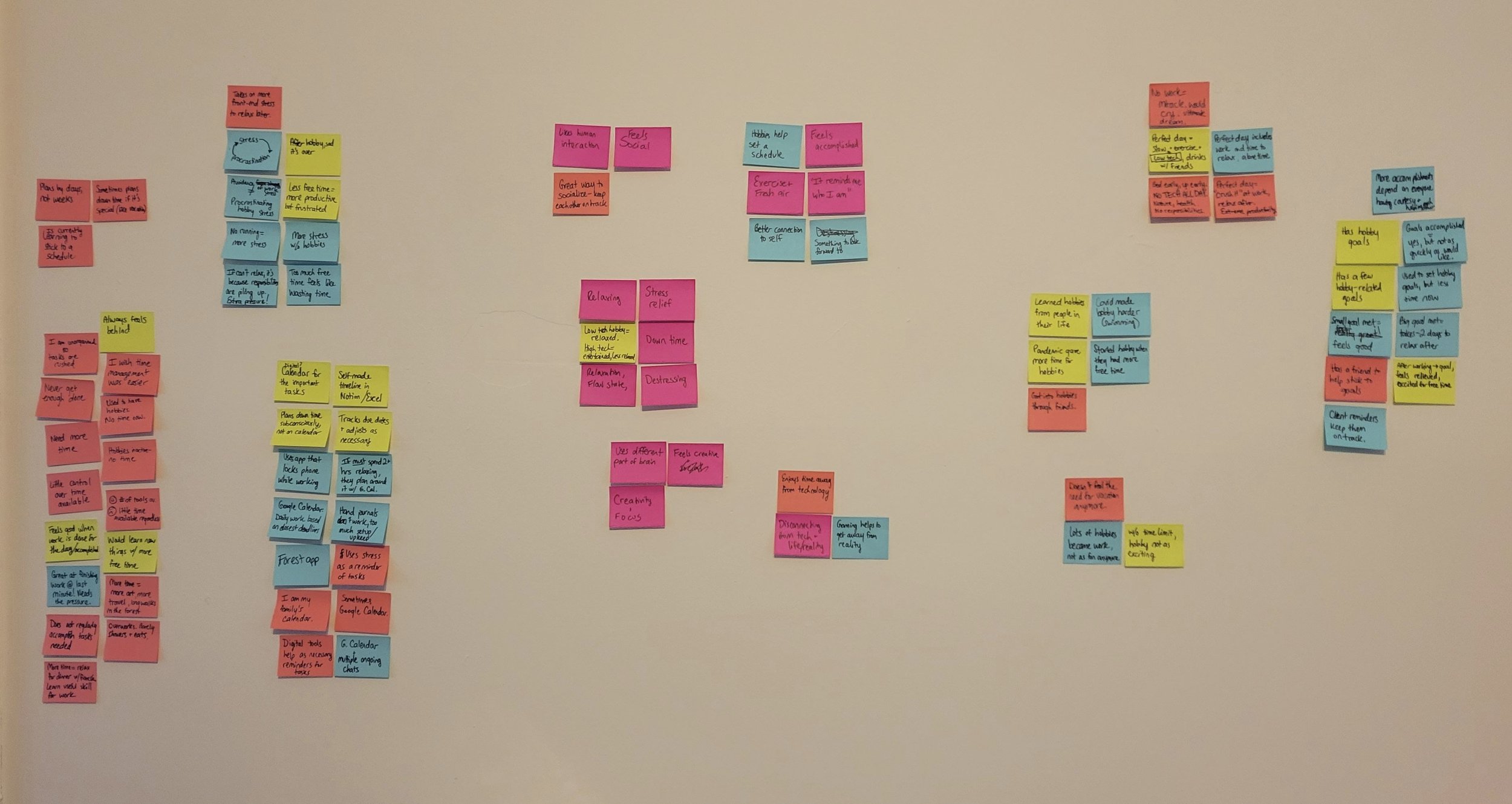I’m still not used to the UX version of that term. Do we have to use it? Is it a suggestion or a requirement? Asking not for a friend, only me.
The interviews went well, so the next step was to parse relevant information. A stack of post-its and a sharpie run later, the wall was covered in quotes and opinions.
I’d asked about hobbies, but also about goals, ideas on rest, and overall time management woes. I found that most respondents held similar feelings about staying on task at work. They had a hard time with it, and didn’t put nearly as much thought into their breaks, even though taking breaks make them feel happier compared to not. It was hard to get out from under the looming shadow of productivity.
Some respondents had goals for their recreation. They wanted to jog more, or beat a game. Some wanted to be able to relax without worrying about what was next on their task list. Talking to people about rest reminded me a lot of teaching. Every couple of hours, I’d tell students to look up from their computers for 10-15 minutes, walk around, stretch, get water - just exist without the task at hand for a moment. It’s hard to do. I forget to take breaks myself all the time.
Now that I could see the information clearly laid out, I had to decide what to do with it. My previous assumption, based on hobbies, wasn’t quite in the direction the research was telling me to go. I decided to work on the problem of overworking, and how to help people build better habits around rest.
This kind of research was new territory, and I found it challenging and intriguing. Discovering common threads in interview responses felt like a new world had opened up. But I still didn’t feel fully at ease. Luckily, after research is design. And that groove was one I knew I could get into.
